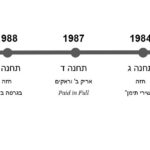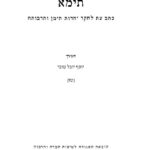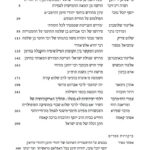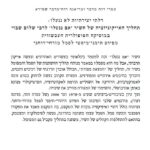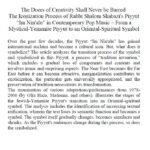Yes, the liturgical poem (piyyut) “Im Nin’alu” signifies orientality. But what is Orientality? Is this traditional, perhaps even religious, Yemenite Judaism? Is this Yemen similar to exotic India? Is this a symbol of the mystical/spiritual “other” (as we already mentioned India…)? And maybe it is a symbol of Kabbalah, another contemporary “Other” that turns out to be similar to all the other “Others”, including the “Other East”…
In this article we follow the change process of “Im Nin’alu” as a symbol, which symbolizes different things each time. The peyote has – it turns out – gone a long way, erasing traditional Yemenite Judaism into the contemporary universal and spiritual-alternative space.
The article is part of the research project on the liturgical poem “Im Nin’alu”, as well as the research project on spiritual music, and the project on the East in the West. While this article was published in Hebrew, there is another article that was published in English (on the subject of the various models of attitude to tradition as reflected in the different adaptations of the liturgical poem), as well as two lectures that presented these studies. See links below.
This comprehensive article (about 10,000 words, in Hebrew) was published in Tema – Journal of Judeo-Yemenite Studies.The journal is published by the “Association for the Development of Society and Culture”, and the editor-in-chief is Yosef Tobi.
Its full title is: ‘The Doors of Creativity Shall Never be Barred: The Iconization Process of Rabbi Shalom Shabbazi’s liturgical poem “Im Nin’alu” in Contemporary Pop Music – From a Mystical-Yemenite Piyyut to an Oriental-Spiritual Symbol’.
Abstract
Over the past few decades, the Piyyut “Im Nin’alu” has gained international acclaim and become a cultural icon. But, what does it symbolize? The article analyzes the transition process of the symbol and symbolized in this Piyyut, a process of “tradition invention,” which includes a gradual loss of components and contents and involves ironic and surprising aspects. The Near East becomes the Far East before it can become attractive, marginalization contributes to exoticization, the particular gets universally appropriated, and the preservation of tradition necessitates its transformation.
The examination of various adaptations/performances from 1978-2006 (by Ofra Haza, Madonna, and others), illustrates the stages of the Jewish-Yemenite Piyyut’s transition into an Oriental-spiritual symbol. The analysis includes the identification of increasing textual reification, wherein the text loses its semantic function and becomes a symbol. The symbol itself gradually changes, becomes simulacra and shrinks. As the Piyyut’s audiences change during this process, so does the symbolized.
Authors
Marianna Ruah-Midbar Shapiro
Omri Ruah Midbar
Links
Year
2019
Language
Hebrew
Academic/Non-academic
Academic item
Bibliographical citation
Ruah Midbar, Omri, and Marianna Ruah-Midbar Shapiro, “The Doors of Creativity Shall Never be Barred: The Iconization Process of Rabbi Shalom Shabazi’s Piyyut ‘Im Nin’Alu’ in Contemporary Pop Music – From a Mystical-Yemenite Piyyut to a Mizrachi-Spiritual Symbol”, in Tema – Journal of Judeo-Yemenite Studies 16 (2019/5780): 263-298. [Hebrew]


